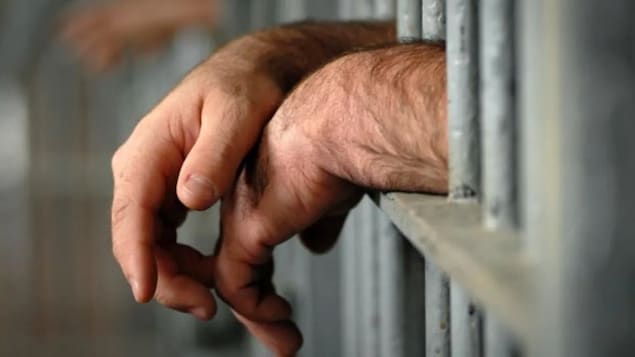From the start of his incarceration at the Toronto East Detention Center in September 2020, Bryan Herrington indicated that he had a good relationship with the staff and that he was active when he left his cell.
But everything changed last January.
Several prisoners were divided into minimum, maximum and medium security units within the same detention center. Mr. Herrington, who faces serious charges including membership in a criminal organization, has been placed in a maximum security unit pending trial.
This is where it all got worse
he says.
The prisoner indicates that whereas he could spend several hours outside his cell before, he was only entitled to two hours a day, just like his fellow prisoners in the same unit.
” It was a radical change for all of us. It’s a shock to our mental health. »
These changes are the result of a provincial pilot project known by the acronym SAFER (Security Assessment for Evaluating Risk) or Security Risk Assessment. The Ontario Ministry of the Solicitor General describes him as being a tool to assess the security risk posed by a prisoner upon admission to a detention center and throughout their incarceration, and which helps staff to anticipate and manage inappropriate prisoner behavior in correctional facilities
.
This pilot program was implemented in September 2021 in the Thunder Bay Jail and Correctional Center and the Toronto East Detention Centre.
At the latter, many prisoners often pointed out that the implementation of the program resulted in frequent confinements, mistreatment of inmates by staff as well as a reduction in the programs offered to prisoners.
The president of the prison guards’ union, however, says the program is effective because it allows staff to better manage their resources, while allowing inmates in minimum and medium security units to feel safe.
The Canadian News collected testimonies from two other detainees from the maximum security unit, who wished to remain anonymous for fear of reprisals. They all claim that the scoring system employed by the SAFER program to classify prisoners appears to be arbitrary and that revisions to their classification — which could allow prisoners to be demoted and placed in lower security units — have not not take place in time.
Detainees also say they have suffered and witnessed violence from staff since the pilot project was set up.
People can do well without their score changing, or their score can improve without them having done anything to get there.
said one of the inmates.
Repackaged segregation
denounces an organization
Richard Miller, founder of Keep6ix, a nonprofit that helps marginalized people navigate the justice system, says he’s heard from many inmates and their families since the pilot project was launched.
They complain of not being able to go out for fresh air, of not being able to communicate with their families
says Miller.
He expressed these concerns in a letter to former Solicitor General Sylvia Jones, who has just been replaced by Michael Kerzner.
There are several black prisoners who allege they received racial slurs and derogatory language. They were told to go back to “their cage” […]. This is language generally used in a zoo and not to address individuals in a detention center
reads Mr. Miller’s letter.
The SAFER program is equivalent to repackaged segregation
according to Mr. Miller, who is calling on the province to put an end to it.
The ministry fights back
In a statement to The Canadian News, Ontario’s Ministry of the Solicitor General says it intends to evaluate the effectiveness of the pilot projects once they have ended […] and continues to seek tools and resources that could be employed in Ontario correctional facilities to ensure prisoners and staff are safe
.
The ministry adds that it cannot comment on individual cases, but points out that prisoners are assessed regularly to determine the level of security in which they should be placed.
All correctional officers must adhere to the Ontario Corrections Code of Conduct and Ethics, which requires staff to maintain a work environment that is fair, inclusive and free from all forms of discrimination and harassment, the ministry also points out. .
Ontario Public Service Employees Union Local 582 President Jason Mushynski says any new program has its pitfalls. He claims that early in the implementation of the SAFER program, some inmates in maximum-security units admitted that they had tried to sabotage it — something one of the inmates The Canadian News spoke to acknowledges.
Mr. Mushynski says he is not aware of any allegations of racist behavior by correctional officers.
SAFER’s scoring system is also fair, he observes, especially since an inmate’s score is determined by an algorithm that takes into account hundreds of factors such as age, history of an inmate and the seriousness of the charges he faces.
With information from The Canadian News
Reference-ici.radio-canada.ca
